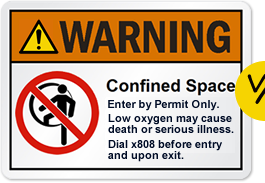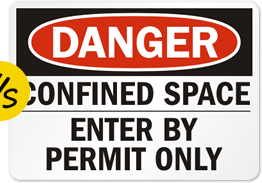Let’s explore when each type of label design is best and if you need to switch your warning label designs to ANSI label guidelines.
|
ANSI Safety Label Designs |
Traditional OSHA Safety Label Designs |
| Prevalence for Safety Labels (approximate) |
- 50% of Market (and growing)
|
- 50% of Market (and shrinking)
|
| Most Common Label Types Header
|
- Warning Labels (most labels use an ANSI Warning header)
|
- Danger Labels (most labels use an OSHA Danger header)
|
| Typical Applications |
- Personal Protective Equipment
- Equipment Warning Labels
- High Voltage Warnings for OEM's Electrical Utilities
|
- In Plant Machinery Warnings (Nip and Pinch Hazards)
- Arc Flash Warnings
|
| Advantages |
- Increased legibility for longer warnings and bilingual messages.
- Clearer for consequence statements and detailed hazard avoidance statements.
- Attention getting pictograms.
|
- Large library of stock designs at low costs.
- Short hazard statements quickly understood.
- Long history (in factories) means increased worker familiarity with these designs.
- Consistency with still-prevalent traditional OSHA safety sign designs.
|
| Disadvantages |
- Increased time and costs to design labels.
- Overreliance on symbols and labels - in lieu of training.
- Language may become too "legalistic" and less focused on immediacy of the hazard (e.g. labels too often designed by the legal department)
|
- "Danger" signal word has been overused (and thus its impact diluted).
- Difficulty in conveying a complex set of warnings, instructions and consequence statements.
|
|
|
|

